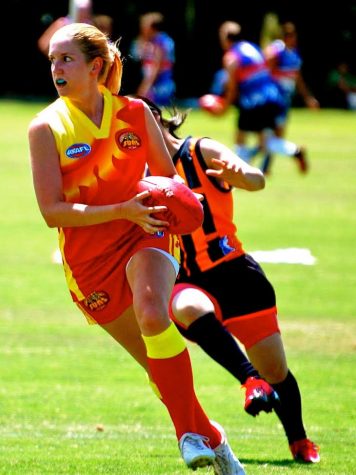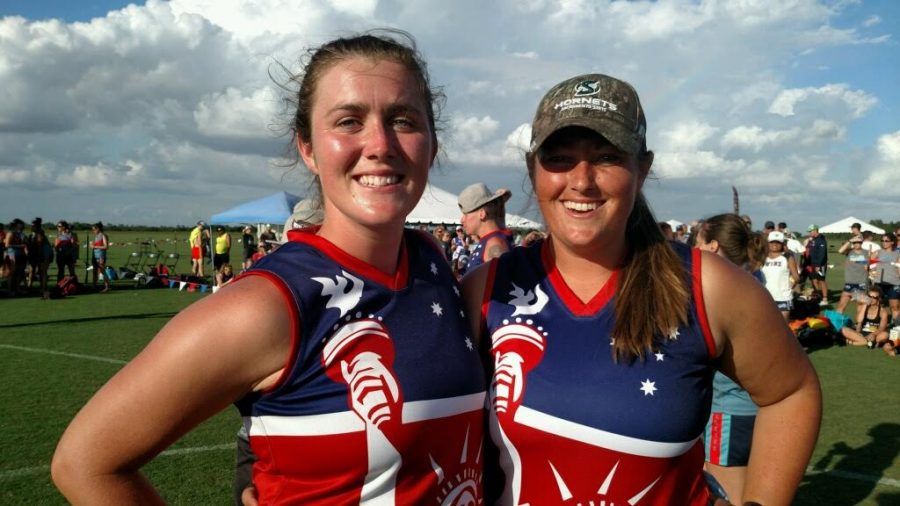Three Sacramento State alumnae have been selected to represent the United States in the Australian Football League International Cup in August 2017.
After the USAFL Nationals on Oct. 17, women’s rowing alumnae Rosemary Kloh and Elizabeth Danielson were announced as first-time national players. Women’s rugby alumna Lauré Kwoka was named for the third time.
Kwoka was recruited to the sport back in 2012 after being approached in a bar.
“This guy literally came up and said ‘hey, I saw your rugby shirt. You should come play footy,’” Kwoka said. “So I did, and, here I am.”
Meanwhile, former varsity rowers Kloh and Danielson had taken up rugby with the Sacramento Amazons after graduating from Sac State. The two were then later recruited by a mutual friend to the Sacramento Suns footy team in 2015.
“It is a dream of mine to be able to make it to a USA team,” Kloh said. “I took every opportu-
nity to get here. This to me shows how many awesome experiences and opportunities you can have when you believe you can do it.”
Australian Rules Football, or footy, is a traditional sport that originated in Melbourne, Australia, during the late 1850s. The sport has since spread to multiple countries around the world who have been competing in the AFL International Cup since 2002.
While it might be difficult to distinguish from rugby, another sport of Australian origin, footy is entirely unique in and of itself.
“It involves all the fun parts of rugby mixed with the fun parts of soccer,” Danielson said. “Rugby is very one-direction. You’re always moving forward and you really can’t look back. In footy, it’s multidirectional and you can move the ball anywhere you need to.”
One of the most unique factors of the sport is that instead of passing the ball laterally, or throwing it forward, players must either punch the ball or kick it.

“I love the freedom of the sport,” Kwoka said. “There’s no offsides, so you’re constantly moving and you never know where the ball is going next.”
All three players have been training and going through an intense tryout process that began in May.
Countless hours of training are logged by each potential candidate during their tryout period, and sent to the national coaches. Food journals are also submitted and training camps held at least once a month — usually in the Midwest — are required participation.
“It’s a lot of training going to practices and treating each one of them as if it were a tryout,” Kloh said. “Every time I touched a ball I was working hard. I practiced outside of practice. And I had a little advantage, being used to pushing myself from rowing.”
Danielson explained that one of the most exciting things about being selected was her chance to see the sport in its country of origin.
“Part of the experience is going to be travel, but also seeing things from an insider’s perspective,” Danielson said. “This is an opportunity to go to another country, and see a sport in its natural culture. (It’s) like going to Argentina and watching a soccer game.”
Among the 16 teams that typically attend the International Cup, the U.S. has not won a medal since 2005. However, all three athletes are not only excited to represent their country, but to represent their alma mater as well.




















































































































